March 8th is International Women’s Day. We choose to celebrate women in battery research. We want to recognize the critical role women and girls play in science and technology.
We took the opportunity to ask some of the female researchers within the BATTERY 2030+ consortium about how they got into science and what they think needs to be done to get more women into the field of battery research:
1. What is your research about?
2. Why did you choose to get into science?
3. What needs to be done to get more women into the field of battery research?
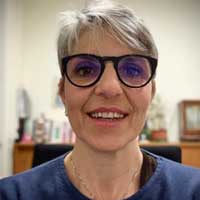
Silvia Bodoardo, Associate Professor, Politecnico di Torino, Italy
1). “I am leading the Electrochemistry Group at Politecnico di Torino, where we are working on innovative materials for lithium based batteries. In particular our work focuses on post lithium ion technologies to enhance properties and increase performance. Some new activities are on novel cells design to get new type of cells combining high energy and high power.”
2). “Curiosity… the curiosity to understand natural processes came first. Today it is more on how we can use natural phenomena to obtain new sustainable storage systems to help the transition to renewable energies and electric vehicles.”
3). “We really need to get visibility to show how women are not worse than men in all fields. We need to stress that education has to be accessible to all gender equally. This process should start already at the secondary school and in families.”
“We also need to disseminate our results in society and be more present in media.”

Kristina Edström, Professor of Inorganic Chemistry and Coordinator of BATTERY 2030+, Uppsala University, Sweden
1). “I study different kinds of batteries and battery materials. I am particularly interested in mechanisms for how ions are transported in solids. I am also interested in how different materials react in the interface to each other to understand what parameters that make batteries to last for a long time when used in an application.”
2). “I have always been interested in scientific questions. I liked to study already as a small child. I think I was very much inspired by questions rather than answers. My heroes were people that said that there was still needs to study and understand more about something.”
3). “We need to show the love for science rather than discussing the difficulties and obstacles. We need to give young scientists good conditions so that they see that there is a long-term commitment.”
“At younger age I do think that not choosing to specialize too young on a specific direction is important. Role models are also important and then to show normal people that can combine science with a family.”

Dr. Maibach, Karlsruhe Institute of Technology (KIT), Germany
1). Together with my team, I explore surface and interface phenomena in rechargeable batteries. We mainly use various photoelectron spectroscopy techniques but also work on bringing together different and complementary analytical techniques. We focus on understanding and improving the processes leading to the solid electrolyte interphase on negative electrodes in lithium ion batteries but also expand to post-Li battery chemistries.
2). I have always been excited to learn and driven by curiosity. Working in science, I get to follow those passions every day. I also got fascinated by experimental work early on during my studies and I still enjoy experiments with all its ups and downs. The struggles and failures are immediately forgotten in these moments of success when you realize that you just observed or understood something, that nobody has before you.
3). We will find the best and most innovative solutions to the challenges in battery research working together in diverse teams across all disciplines. So, spread the word! I try to share my passion for materials science and battery research in my teaching and every other opportunity to inspire students to join this exciting research field.
I myself have been inspired by amazing female battery scientists that effortlessly combine an academic career and family life and it has given me the confidence to do the same. I truly hope to follow in their footsteps.

Montse Casas-Cabanas, Scientific coordinator (Electrochemical Energy Storage), Ikerbasque research associate, CIC energiGUNE, Spain
1). The core of my research is to design, prepare and characterize materials for the development of next generation battery chemistries. We employ cost-efficient synthetic processes, with a focus on sustainability and recyclability, in combination with scattering, imaging, and spectroscopic techniques to develop fundamental understanding in structure-property correlations. I have a background and experience in electrode reaction mechanisms through the use of operando experiments and, in particular, in the study of the impact of structural disorder and defects in the electrochemical performance, for which I pioneered the development of the FAULTS software. We are now developing an automatic and autonomous platform which, combined with artificial intelligence algorithms, will be capable of making effective predictions of the result of automatic experiments. This will allow to reduce the time and cost without precedent in the development of new materials for batteries.
2). I have always been very curious and eager to learn. As a child I used to ask a lot of questions and was tremendously interested about how things work or why things happened, so science always felt as my natural career path. However, I still had a hard time when I had to drop literature, languages or arts and start specializing in sciences, and chemistry in particular. Later I realized that there are amazing opportunities in science for meeting new people and different cultures, I have now friends from all over the world! I also had great teachers and mentors that nourished my passion for science, to which I am extremely grateful. One of the reasons why I love being a battery researcher is that, despite we are highly specialized, our field is totally multidisciplinary. We are constantly learning and facing new challenges and this continuously renews my self-motivation.
3). There is a lot we can do at different levels as we still need to break down many gender stereotypes in battery research, and in STEM jobs in general. We must give visibility to women working in the field. I strongly believe that having female referents can make a real difference in female career expectations, starting and a very early age. It is also important that we support and mentor other women, creating opportunities and enriching our professional networks, having female role models and mentors has been transformative for me. Gender balance should also be seriously taken into account in companies and institutions, we’ll get more women into our fields only if we hire women! And obviously gender equality, childcare and dependent care policies in the labour market make an enormous impact. In Spain, where I live, paternity leave was only two weeks until five years ago, which created a huge bias in female careers. In recent years the situation is improving (for example today both parents enjoy today the same rights), but there is still a lot to be done to end with the “female caregiver” and “male breadwinner” model in our society.

Elixabete Ayerbe, Team Leader – Modelling & Post-mortem Materials for Energy Unit CIDETEC Energy Storage
1). I am leading the modelling and post-mortem group in the Materials for Energy Unit at CIDETEC Energy Storage, where is specialized in creating new battery technologies according to specific challenges, and its ultimate transference to the industry. In particular, my research focuses on gaining in-depth understanding on the battery performance and manufacturing processes through multiscale & data-driven modelling and advanced characterization, closing the loop in the iterative process of improving battery development.
2). I have always been curious to understand the “why ” behind everything. Since I was young, I have been aware of the need of protecting the environment for the benefit of nature and humans. In this regards, I used to dream thinking that my work could potentially improve the environment. All this curiosity, interest and needs of exploration together with my passion on mathematics, brought me to get into the field of battery modelling which is linked somehow to my personal aim on improving energy efficiency and tackling critical environmental issues.
3). I think that there is a huge amount to be done to ensure that we are attracting, recruiting and retraining talented women into the battery research field. But, I believe that the issues go far wider than research community itself. Tackling them will require a joined-up approach from the research community, Government and commissioning authorities, beginning with children at primary school and continuing throughout education and training and in the workplace. Additionally, there are several organizations, such as the one I belong to (i.e. https://inspirasteam.net) dedicated to raising the aspirations of young girls around the world by connecting them with female role models. In this regard, I believe we –women at battery research field- could contribute by participating in this kind of pioneer projects for the promotion of the scientific and technological vocation among girls based on awareness-raising and orientation actions.

Claire Villevieille, CNRS Research Director, Grenoble, France
1). I am currently working in understanding complex electrochemical reaction mechanisms occurring in battery at different scales (from nano to millimeters, bulk, surface, interface) using lab techniques and large-scale facilities, the so-called operando techniques (that is why in the picture I am at ESRF). The good point is that when you develop methods you can work in all possible systems, conventional Li-ion batteries, Na-ion batteries but also water-based one, and the most challenging ones the solid-state batteries.
2). Well, I was always fascinated by science being a child. I was always playing with Lego and tried to develop some toys, some little experience out of it. As a Master student, when I entered for the first time in a research laboratory, I felt like at home, so, I decided to stay in a lab a bit longer… turning to be a senior scientist as my day-to-day job. Still now, I am fascinating by what I can constantly learn thanks to the people I can meet every day.
3). Actually, that is an interesting question that could also be asked to Gentlemen, don’t you think?
More seriously, I guess We, as women in Science, should kind of advert our job, like an open platform where we could discuss, meet, and where we could be showing them how fantastic this world is!
In a larger sphere, I think that there are lot of actions in the world to promote the role of Women in Science, which is an excellent start but still we need to continue. As an example, when you are planning a conference or symposium, think about inviting more women, little changes will make big differences.
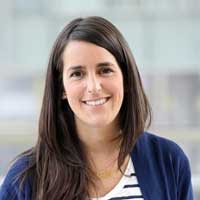
Maitane Berecibar, Professor, Head of the Battery Innovation Center and Coordinator of BAT4EVER
MOBI Research Group, VUB, Belgium
1). I obtained my PhD in Engineering of Sciences at the VUB titled “Development of an Accurate State of Health Estimation Technique for Lithium-Ion Batteries”. Even though my research topic was defined by my PhD on State of Health estimation techniques, I felt always fascinated by all research actions that are developed on batteries. The world of batteries is unstoppable, it has no limits: self-healing properties, sensors, solid state batteries, different battery generations, digitalization, management, smart estimations, reusing, recycling… so many interconnected topics. It is definitely fascinating, and I always push myself to know more and more. At this moment, I am part of the Battery2030PLUS initiative, and I am coordinating BAT4EVER, a recently granted project by the European commission that aims to develop self-healing batteries.
2). Science has always been my passion. I have always felt so comfortable with math’s and physics, I was always intrigued on why this, and what if. In addition, I have always been very eco-friendly. Being aware of the state of our world, and how to treat it better so to keep it longer. This made me feel that green technology could be my cup of tea. Creating a better world by providing green technological solutions.
3). Even though the representation of female in science has increased, still there is a lot to do. From my point of view, there are 5 main key actions to highlight in order to get more women in the battery field:
- Equal education: Follow more equal educational, parenting and professional systems. Girls can do applied engineering science, and we need them.
- References: Highlight female researchers in engineering science, highlight female CEOs, CTOs of big industry.
- Give opportunities: Create more opportunities, hire female researchers.
- Confidence: Emphasize the work of female researchers and encourage them to interact more by giving them confidence in themselves.
- Flexibility: flexibility and work-life balance conditions are needed.

Ivana Hasa, Assistant Professor WMG, University of Warwick United Kingdom
1). I study and investigate the thermodynamic and kinetic processes governing sodium-ion batteries, which I consider one of the most promising next-generation sustainable energy storage technology. My research interest focuses on the development of technically relevant battery materials and the characterization of their surface and bulk properties. My work is inherently interdisciplinary, tackling challenges at the interface of chemistry, materials science, and electrochemistry.
2). Since I was a kid in school, I always admired people examining facts and observations, and not taking for granted a point of view or the validity of an answer. The scientific dialogue and the exchange of opinions is what makes research exciting. The ability to demonstrate our hypothesis and to understand the unknown is the most fascinating challenge for me. I am very happy to be part of a vivid community in the field of battery research. This is an amazing scientific challenge in which everyone can bring their own creativity and innovative ideas.
3). As a scientist and a woman, I would like to tell everyone that this is a great community to work in. We should show outside of our community how much passion and dedication we put into science, and how rewarding it can be. By conveying a sense of positivity, inclusion, and engagement, we have the potential to attract many other extraordinary women scientists into our community.
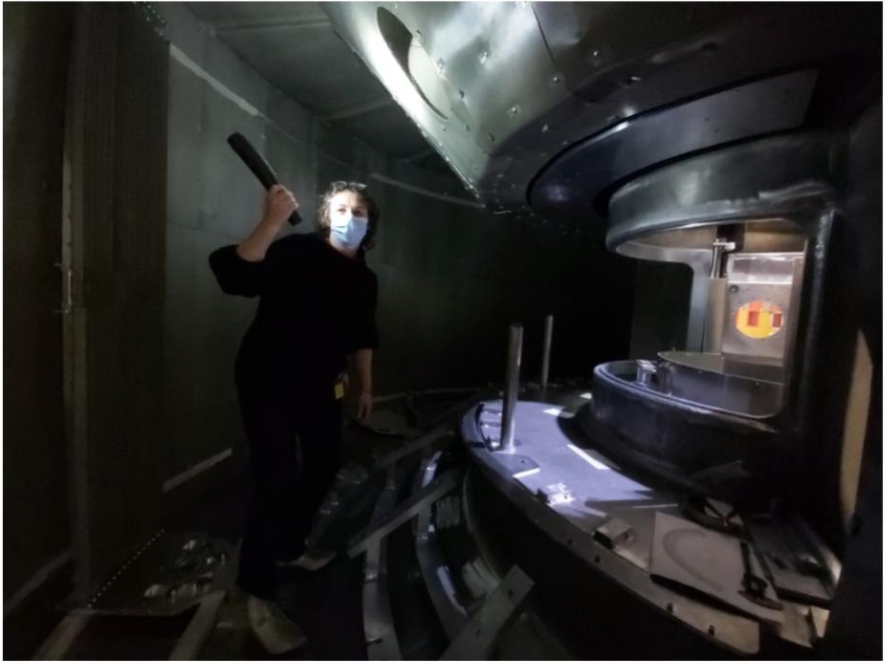
Sandrine Lyonnard, Physicist, Group leaderCEA-IRIG, Grenoble France
1). As a physicist, I am working on nanomaterials for energy conversion and storage by means of neutron and X-ray scattering techniques, in particular in operando mode, to probe the evolution of fuel cell and battery components during their operation. My interests range from soft matter materials as proton-conducting membranes or single-ion Li-conducting electrolytes, to nanostructured silicon-based anodes or high voltage cathodes. My focus is on scattering, imaging and spectroscopic techniques applied to in-depth understanding of key mechanisms as structure-transport relationship and ageing of materials.
2). It may be a long path to become a scientist! The French painter Pierre Soulages said: “ What I find shows me what I search”. Choosing science was not a truly mindfull process, but rather the consequence of curiosity, willingness to watch beyond, and fondness for understanding how things (and people !) work, evolve and interact. The passion for knowledge, in general, and more specifically for the beautiful concepts of modern mathematics and physics, brought me to the great challenges of materials science. “Try again, fail again, fail better” says my bedside writer Samuel Beckett.
3). I fear clichés about women in science but, at the same time, I always felt very concerned by gender equality and the importance of promoting women in fields as physics or materials science, where they are still under-represented. Very often women turn away from the path of “hard” science, or stay long below the glass ceiling, for many reasons. Education and mentoring are headstones in my opinion to gradually change the game. Key is surely that visualizing a future through visible examples helps everyone to climb any mountain and build the path to a successful life. In this regard, we, women in batteries, should help young girls, young female students, young junior female scientists, to become aware of the variety of careers that they can develop in battery research, just as men. Publicizing the benefits of diversity is a kind of daily attitude we can have, in meetings, in conferences, in the labs, towards funding and managing bodies, as supervisors, as teachers, as project leaders, as partners ! Personally I also militate with my three sons, everyday, to show them that a mother can be an active and happy researcher, and that commitment and dedication is absolutely gender-neutral !

Julia Amici, Researcher at Politecnico di Torino, Italy
1). “I am working on the development of materials for Li-ion and post Li-ion (Li-sulfur and Li-air) batteries, at cell level. I started my research on this topic during my Post-Doc, after a PhD centered on polymers for other applications. In particular, during my Post-Doc I worked on the preparation and characterization of cathodic active materials for Li-air batteries as well as polymer membranes able to specifically block or let through oxygen.”
“Afterward, I shifted toward Li-sulfur batteries once again on the preparation and characterization of cathodic active materials and polymer interlayer membranes to block polysulfide shuttling.”
“Lately, I went back focusing on my first love: polymers, working on polymer electrolytes to allow longer and safer cycling of metallic Li cells through, for example, the use of self-healing materials.”
2). “Since I was a child, I was always curious to understand how everything was working. Where did the rainbow come from, how could electricity light a lamp, why soap in water formed foam, and from a very young age I understood that science was a way to get answers. So, I guess I could say that my curiosity got me into science.”
3). “In general, we are missing women in STEM disciplines (science, technology, engineering and mathematics) and I guess it’s because, historically, those were seen as boy’s areas of interest. Therefore, I would say that we need information campaigns (and the International Day of Women in Science is a really good initiative) to show girls from a young age that they belong to the field as much as boys do.”
“In my opinion, it is also very important to advertise the achievements of women scientists, in the field of battery as well as other fields, to encourage women to perseverate.”
“Last but not least, education is of course at the heart of everything. Until now Europe has been lacking serious education program on energy storage, fortunately this should be about to change, and it’s very important to encourage women to follow these new programs by communication and advertising campaigns.”
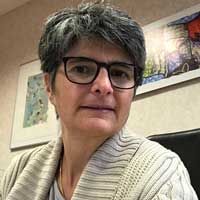
Pascale Bayle-Guillemaud, Deputy Head of the Interdisciplinary Research Institute of Grenoble, CEA, France
1). “I am a physicist specializing in materials science. I started research during my PhD, and for three years, I discovered that by using transmission electron microscopy, I could observe atoms! It was for me at that time a wonderful tool to understand how atoms were stacked in thin metallic films, to measure the deformation at the atomic scale or to observe the phase changes when the thickness of these films varies.”
“Then, during a post-doctorate in England, I used the transmission electron microscope to map magnetic films. Indeed, the electrons are sensitive to the magnetic field in the samples and we were able to use Lorentz microscopy to map the magnetization in the magnetic heterostructures which are now used in the read heads of computers.”
“Back in France I got a research position at the CEA research center in Grenoble. I then developed another TEM capability, the electron energy loss spectroscopy (EELS), which I used to study nanomaterials.”
“Finally, colleagues from chemistry came to see me because they needed to understand the distribution of the chemical phases in their battery electrodes. Therefore, at the beginning of the 2010’s I started to study these materials and to develop suitable protocols to minimize the irradiation of the electron beam and to obtain the mapping of the chemical phases of the solid electrolyte interface, in order to understand the degradation Si-based electrodes.
Meanwhile, a lot of energy has been spent on battery research in my institute and we have extended our skills to other characterization methods and developed in-depth expertise for operando characterization in large-scale installations using X-rays and neutrons, NMR, tomography.”
“Today, I promote the activities of my research institute for batteries, being now deputy director of this interdisciplinary research institute of Grenoble (IRIG), which brings together more than 1,000 people.”
2). “Very young, I was always much more interested in science lessons! I started to study at the university and after my Master’s degree, I was fortunate to have a thesis subject that fascinated me and to meet great people who convinced me to continue in science.”
3). “As a physicist I meet much more women in the field of battery than in pure physics area. There are more women in chemistry and electrochemistry than in physics. So, for me it is more the question how to bring young women in science and in research.”
“Young people are very connected and great stories of careers as women in research could certainly influence or at least encourage young women to do research, and why not in the battery field.”

Katharina Becker-Steinberger, Researcher, Helmholtz-Institut Ulm, Germany
1). ”We are researching battery cell technologies for electrified mobility applications. As part of the Department of Computational Physical-Chemical Modeling at Helmholtz-Institutin Ulm, I am working on theory-based continuum modeling and the numerical simulation of all-solid-state batteries.”
“The aim is to improve the understanding of the processes and limitations in inorganic and polymeric solid electrolytes, to support material manufacturing and production. The focus is on systematic studies of phenomena that are experimentally hardly or not at all accessible.”
2). “I have always been interested in science. I’m also curious and interested in understanding things better and moving them forward.”
3). “Since battery research is based on the natural sciences, this goes hand in hand with the question of how these subjects can attract more women. This begins with science subjects in school and later at university where qualified, encouraging teaching is required. If you want to construct a “deflector shield”, you must know what a “deflector shield” is.”

Dr. Aurora Gomez Martin, Postdoctoral researcher at University of Münster Germany
1). Currently my research focuses on the synthesis of Ni-rich/Co-poor layered oxide cathode materials for the development of high-energy lithium ion batteries. I am conducting studies on elemental substitution on high-Ni layered oxides to overcome intrinsic structural instabilities. I am currently working in the H2020 European project “SeNSE”.
2). Although I knew it could not be an easy path of life, the thirst for knowledge and the need to understand how and why things happen led me to get into science. My interest in material science and batteries, started when I figured out the great importance this discipline was gaining in industrial applications, which are of vital significance not only for the future human wellbeing, but also for environmental sustainability.
3). Today, women still continue to be extremely small in numbers in comparison to men in science. However, attracting and retaining women in science require action from all fronts not only by the research community itself but also by the governments and education programs. To truly reduce the gender gap, we must encourage girls to study science, support them to have adequate balance between science and family, and make their achievements visible.

Dr.-Ing. Janna Hofmann, Chief Engineer Batteries and Fuel Cells Machines, Equipment and Process Automation at KIT – The Research University, Germany
1). My research is about machines and process automation for battery manufacturing equipment. In my group we are trying to understand what happens inside the machine during the process and how we can improve the machines to build better batteries. Therefor we use instruments like industry 4.0, artificial intelligence, process simulation, digital twins and many more to understand and solve our research problems. Within our team we want to rethink battery manufacturing and have our focus on agile and flexible manufacturing processes and systems.
2). After finishing my PhD I had the chance to stay in university and I love the freedom I have here to develop. I love working in an interdisciplinary team together with materials scientists, chemical engineers, chemists, electrical engineers and us mechanical engineers in our KIT Battery Technology Center.
3). We definitely need more female role models. But I think it also needs teachers to tell young pupils to go into science and more professors to encourage young women to make a PhD after finishing their studies. But compared to classical mechanical engineering, we are many women in the field of battery research.
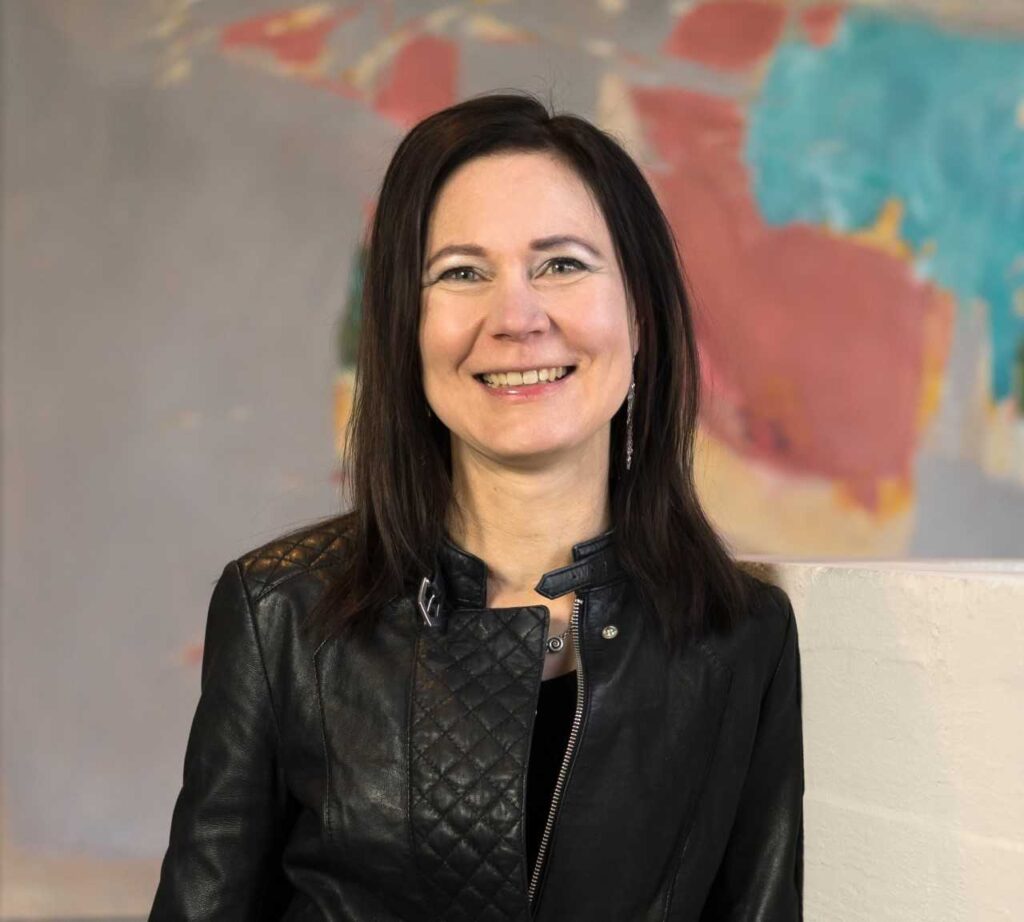
Prof. Tanja Kallio, D. Sc. (Tech.) Electrochemical Energy Conversion and Storage School of Chemical Engineering at Aalto University, Finland
1). I have been working on material development for various electrochemical energy conversion technologies for more than 20 years. Recently, the focus has been on developing more responsible electrochemically active materials for lithium batteries and hydrogen technology. For batteries, we are developing electrode materials and structures to enhance battery efficiency and cycle life. We have worked on development of interface layers on the electrode active material and investigated their effect on the material and battery functioning and aging.
2). Since a teenager, I have been curious about structure of materials and their functioning which led to chemistry studies at the university. While studying at the Helsinki University of Technology as an undergraduate I became interested in energy conversion technologies and their environmental aspects and hence seized an opportunity to complete a doctoral thesis on fuel cell materials. While doing research for the doctoral thesis, I realized that working as a scientist gives a tremendous opportunity to learn new. It also offers possibility to contributing important work on development of more environmentally friendly technologies needed in our everyday life and hence is highly important. Hence, this career is the perfect match for me.
3). For involving more women into battery research, we need to highlight the importance of this field from the sustainability and environmental responsibility perspective. Opening up the decisive role of energy storage as an enabler of renewable energy based society must be opened up. Likewise, the real collaborative nature of scientist work must be uncovered. We need to reach out not only to undergraduates at the university but also girls at the senior elementary school classes before they select their study place. We need to show that positive role models for them.

Edel Sheridan, Senior Business Developer SINTEF, Norway
1). In my role as business developer, I work closely with industry to identify their needs and match the necessary expertise in our research teams. At SINTEF, we carry out research across the battery value chain and strongly support companies who aim to bring batteries technology and systems to the market. Our involvement in Battery 2030+ and EU projects including BIG MAP, HYDRA, SOLSTICE, SEABAT and CROCODILE provides excellent opportunities to carry out ground-breaking research in strong European multi-disciplinary teams.
In recent years, I personally have developed a keen interest in the challenge of converting research into real tangible industrial innovation and then market uptake and to understanding the true impact of these innovations. Thus, I am often involved in the innovation activities in projects. An electrochemist by training my earlier work focused on Li ion batteries, supercapacitors and metal air batteries. In addition to batteries, I have synthesised catalysis for fuel cells, developed gas separation membranes and electrochemical sensors.
As technical leader in the Batteries Europe ETIP, I have the great privilege of coordinating and working closely with many of the best minds across the battery value chain, to identify and define the key research needs of the future, to support the development of sound reporting methodologies and to foster a common understanding of our sustainability goals throughout the battery community and beyond. A holistic approach is essential as innovations to one part of the value chain will have significant influences on other parts.
2). As a kid, growing up in rural Ireland, I was fascinated by the earth, the planets and by nature and was deeply concerned about the then gaping hole in the ozone layer. In school while I faltered at learning languages, I thrived and lived for our engaging, colourful science classes. Experiments from titrations to igniting magnesium were fun. My science teacher Miss Doolin encouraged me to study further. At Maynooth University I began with a good foundation degree in science and followed it with a PhD in electrochemistry under the ever-patient supervision of Prof. Carmel Breslin. Research was fun and I was hooked…the step-by-step methodology, the experimental work and the development of understanding were both incredibly frustrating and enjoyable. Subsequent to my PhD, I took a postdoc role at Prof. May-Britt Hägg’s membrane technology group at NTNU, Norway after which I began research at SINTEF’s New Energy Solutions research group. One continuous red line runs through my career and that is the presence of strong female role models. I believe this is one of the factors that guided my choices and still does to this day.
3). I have recently been appointed as the only female representative, to the Executive Board of the Battery European Partnership Association. While I am very much dedicated and greatly honoured to have this role, the fact that there is only one female representative among eight speaks volumes about the on-going gender balance gap. This situation is common in STEM boards and committees worldwide.
Role models who are supportive and encouraging, including those you are currently reading about, play an essential part in involving women in battery research. In addition, our male colleagues, friends and partners, who support and promote our engagement in battery research, are our most powerful allies in closing the gender gap divide. To add, women themselves must also trust in their own abilities and go for opportunities. I have heard it said a woman often needs to be asked three times before she will consider herself for an important role…the problem is, we may only be asked once!
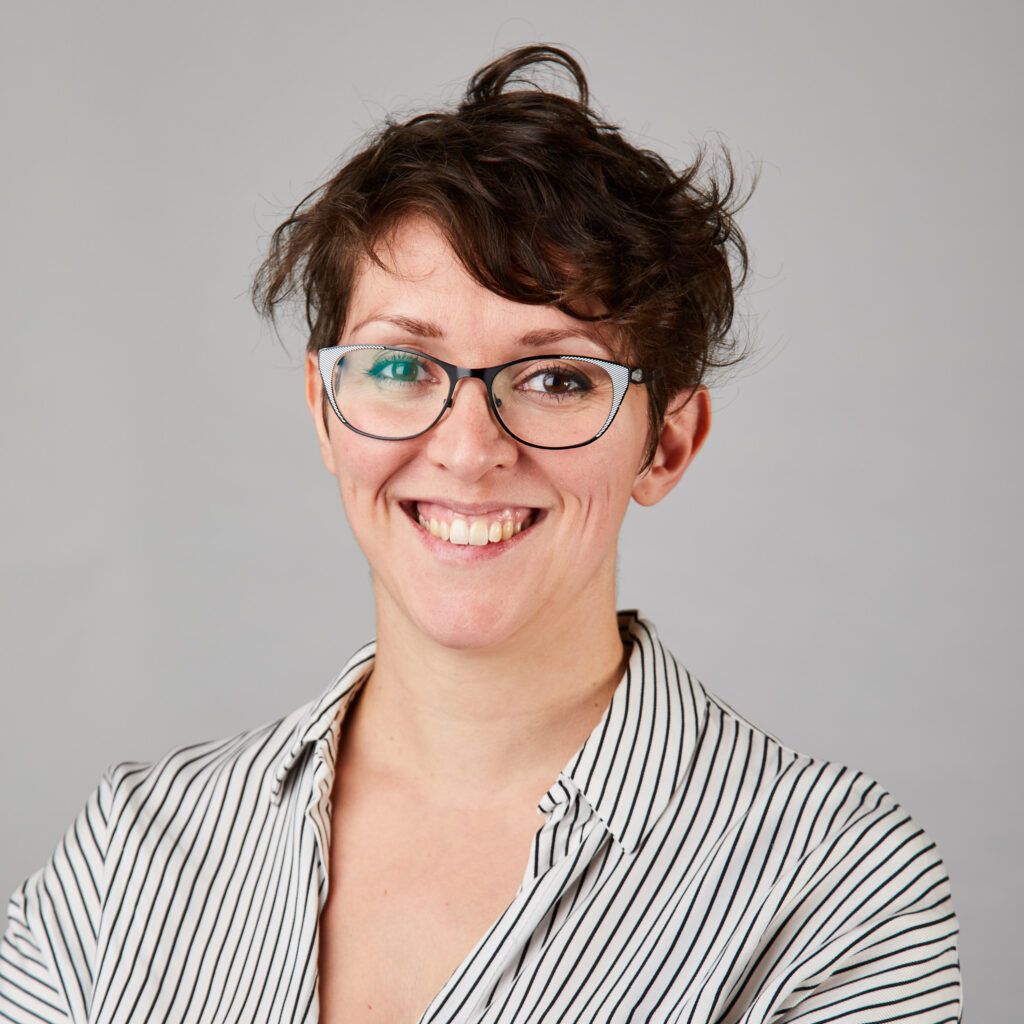
Maeva Philippot, Researcher, Vrije Universitet Brussel, Belgium
1). I am investigating the sustainability of batteries: environmental and social impacts. From raw material extraction in mines to potential second life and recycling, each stage of the life of batteries offers new challenges to tackle. From cradle to grave, I wander what are the hotspots and how to reduce the impacts of today and tomorrow’s batteries. In all the different technologies Mobi is investigating, I wander which ones reduce pollution and limit the negative social impacts. I focus not only on climate change but also on toxicity, particulate matter formation and other impact categories. For instance, manufacturing in Europe reduces the emissions of greenhouse gases. The source of the raw materials is also one of my focuses as the working conditions differ from one country to the other. The increased lifetime of future batteries allows to qualify them for second lives in stationary applications, however, it’s not yet clear if this is a good option on an environmental and social point of view. My main tool is life cycle assessment and social life cycle assessment. A tool integrating those aspects is needed and will be developed to evaluate the environmental and social impacts of the current and future batteries.
2). Having a mother piloting aircrafts showed me that there is no limit to what I could do as a woman. I always wanted to understand how the world is functioning. Science in school, whether it was biology or physics, helped me to understand the world surrounding me. During my superior studies, I discovered that we still need to understand a lot and that there is a lot of space for research in the field of environmental impact assessment! To contribute, I decided to get a PhD
3). We need examples of female scientists in general, not only in the field of battery research. How many names of famous male scientists do you know? And how many famous female scientists? Probably a lot less. That’s for me a big issue. In science classes from primary school to high school, we should study also science history and science representatives of both genders.
Having an equal parental leave for the birth of a child would help women to get into challenging careers such as engineering and science.

Marja Vilkman, Senior scientist at VTT Technical Research Centre of Finland and coordinator of the HIDDEN project, Finland
1). I work in the field of flexible electronics at VTT Technical Research Centre of Finland and have been focusing lately on energy related topics. First, I was working more on the energy harvesting side, studying organic solar cells. However, a few years ago I realized that I want to concentrate also in batteries as we cannot utilize renewable energy, like solar and wind, well without proper and sustainable energy storage solutions.
Currently, I’m coordinating a Battery 2030+ project HIDDEN, which develops self-healing Li-metal batteries. In addition, we have ongoing projects at VTT where we study e.g. the use of bio-based materials in energy storage applications. I’m also coordinating a Factories of Future project OLEDSOLAR, where we are developing innovative manufacturing processes for solar cells and OLEDs. These projects allow me to work in my favorite fields, and I truly feel that our work will have a big impact in enabling clean energy production and storage for current and future generations.
2). When selecting what to do after school, I was first thinking to study biology or biochemistry, as I liked both biology and chemistry in high school. Thus, I selected to apply to the Chemistry department at Helsinki University of Technology (currently Aalto University) as they offered biochemistry courses. There I got familiar with polymers, and I immediately felt that they are very interesting. I got even more excited when I learnt about conducting polymers and saw the numerous possibilities of organic electronics. I eventually did not study biochemistry that much. Instead, I had polymer chemistry as my major and physical chemistry as my minor topic. Finally, I ended up in doing my PhD at the physics department, focusing on polymer physics.
3). Indeed, selecting a physics department at a technical university did not feel natural to me when I graduated from high school. Maybe I just was not aware of all the opportunities and possibilities physics could offer, or maybe those opportunities were not even introduced to women that much. Anyway, I am very happy that I eventually found this field and can now do the job I love.
Thinking of my own history, I would have needed more information on the battery and energy related research fields when I was still in school and selecting where to go next. Thus, giving an example and being visible e.g. in social media or schools might help young people to get familiar with this field. In addition, teaching in universities will help as well. Even though I’m working in a research institute where teaching is not part of my work, I have been voluntarily involved in teaching e.g. at Aalto University. I really hope that I have given the students motivation to pursue a career in this field.
It is also possible to change the direction of your research in a later stage as well, just as I did. For enabling this, we need to offer education on batteries also for people who are not students anymore.
